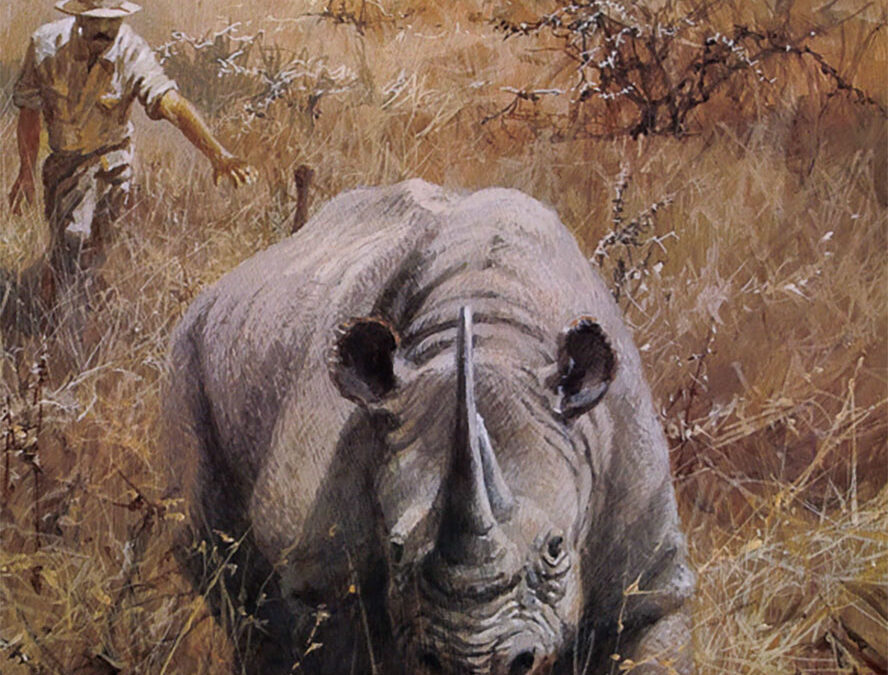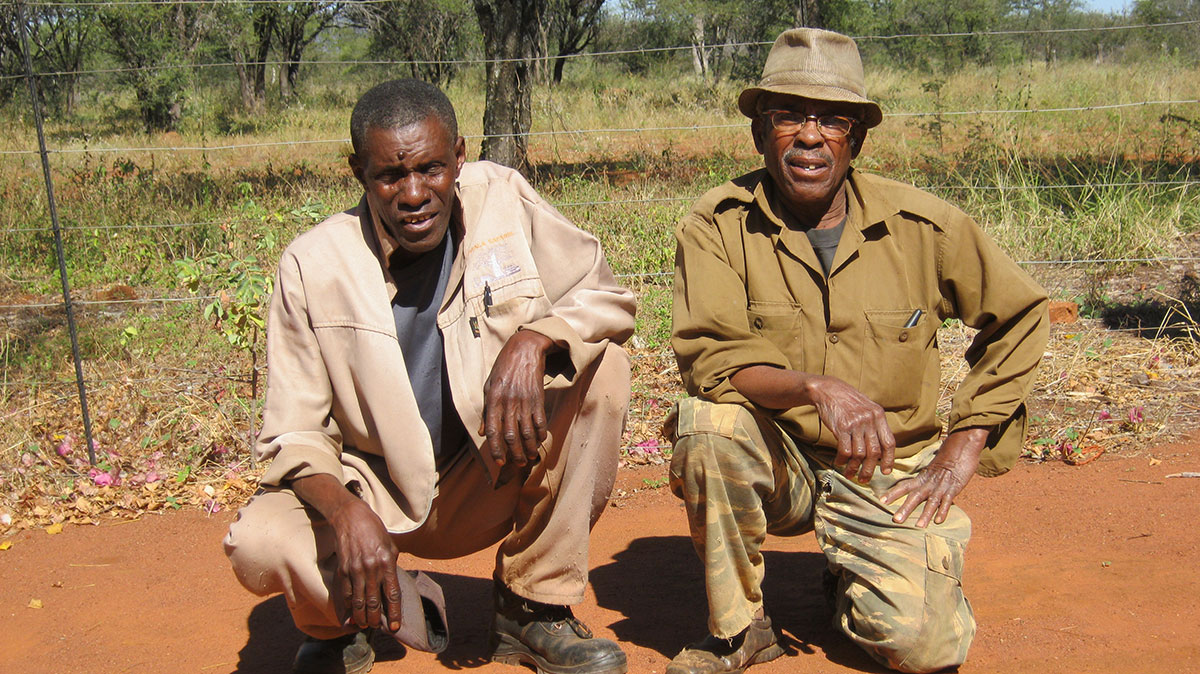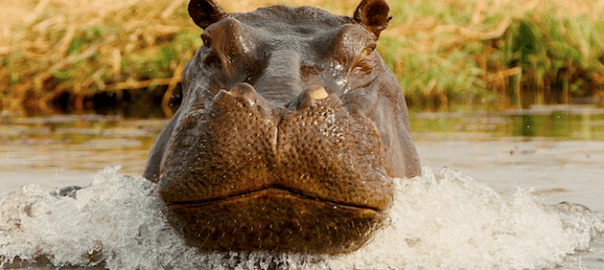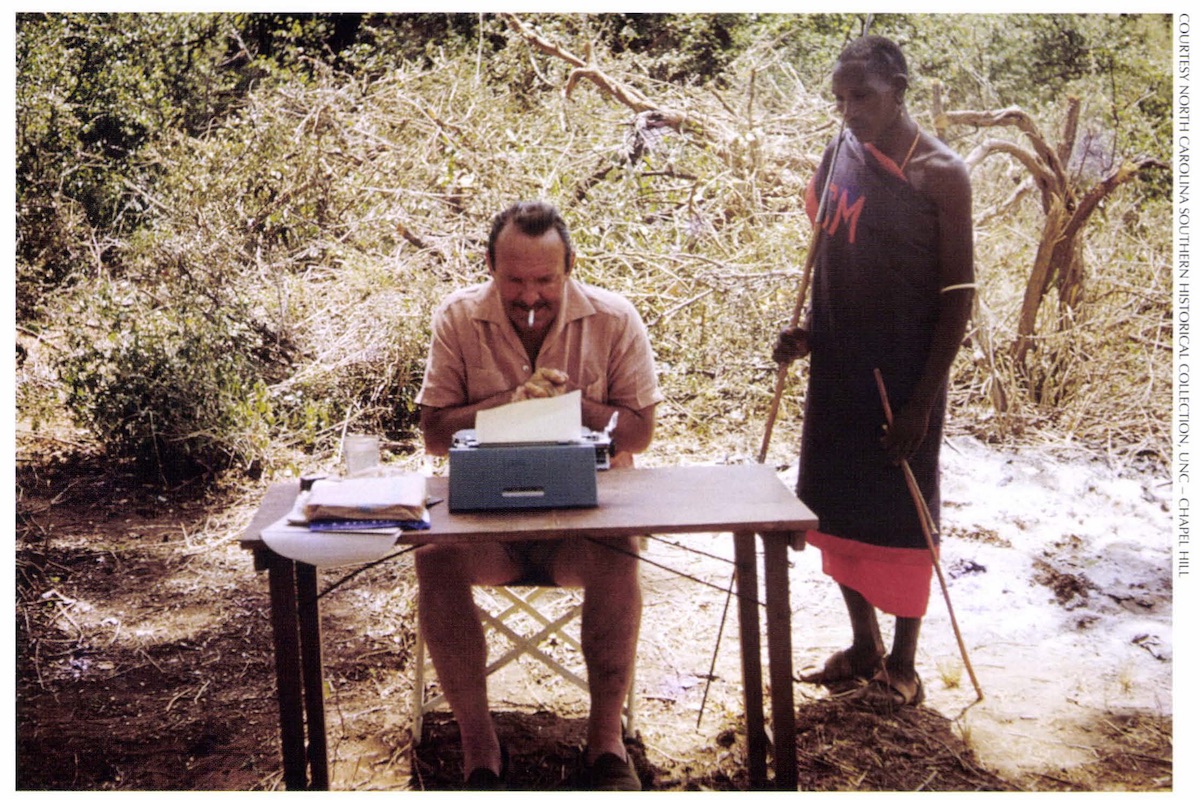When I was researching my book, Legends of the Hunt, I came across some unbelievable and farfetched stories. The one recounted here is perhaps the most incredible, yet it was verified by two independent sources.
In 1900, Mr. Larkin, an engineer for South African Railway, and Dr. Stewart set out on a hunt close to where the Uganda Railway Line was being constructed at Makindu River, between Nairobi and Mombasa. The grass was tall and the men had a hard time seeing across the plains. To get a better view, Larkin decided to scale a tree and glass the surrounding area for game. With the doctor’s help, he climbed to a low branch from which he saw a large gray object trotting toward them.
As he edged farther out on the branch, it suddenly snapped, dumping the engineer into an acacia bush. Just then a large rhino rumbled past, unaware of the two hunters. The doctor helped Larkin from the thorn sand the men watched the rhino trot away, tail in the air, toward the railhead camp.
Bleeding and his clothes in shreds, Larkin grabbed his gun and the hunters started after the rhino. It was heading toward the railhead, so they decided to follow the animal until it got close to their camp where they would shoot it. This would certainly make it easier to get their trophy home.
The rhino trotted blissfully through the long grass while the hunters jogged behind. But when the beast reached the open savannah, it abruptly changed direction. Frustrated, the doctor fired at the rhino’s rear end. The beast slid to a stop, apparently puzzled by the pain in his behind, and remained virtually motionless.
The two men began to shout and even threw stones at the rhino to turn it back toward their camp. The engineer, who by then, was getting increasingly disturbed by the situation, decided to break off a tree branch and thrash the animal into motion.
Branch in hand, Larkin crept up behind the rhino, which was chewing its cud and staring blankly into the distance. With all his might, he whacked the animal’s rear, but it remained completely stoic, unconcerned by the onslaught.
The men decided to shoot the rhino where it stood, but as they raised their rifles, it snapped out of its daze and started to walk, but in the opposite direction of their camp. Annoyed by the animal’s contrariness, Larkin raced after it and grabbed its short tail. He desperately pulled and tugged the tail sideways in an attempt to change the rhino’s direction.
The animal started to move faster, yet the engineer hung on, struggling to redirect it. The doctor, who was lugging both rifles, trotted behind man and beast, completing this unlikely procession across the savannah.
Finally, realizing not all was right, the rhino stopped and wheeled around. Refusing to let loose of the beast’s tail, Larkin was spun around and knocked to the ground. The rhino, meanwhile, caught the doctor’s scent and immediately charged him.
Stewart raised his gun, but the engineer, who was still gripping the tail, shouted not to fire as the bullet might hit him. Heeding his companion’s advice, the doctor dove behind a large acacia bush as the rhino bore down upon him with the frightened engineer in tow.
The rhino stopped once more and cocked its ears forward as though listening for something. Then, catching the doctor’s scent, it ran around the bush in hot pursuit. The trio went ’round and ’round the bush, the doctor running for his life, the rhino giving chase and the engineer hanging onto the tail for dear life.
Finally, the doctor dove into a bush to end the dangerous merry-go-round. The rhino stopped, along with the exhausted Larkin who still had a death-grip on the tail. The doctor picked himself up and took careful aim at the rhino, which was now standing broadside only a few feet away.
He fired, bringing the animal down with a fatal shot to the neck. Though completely exhausted, Larkin had slipped into a kind of terrified trance and refused to loosen his grip on the rhino’s tail. Only after the doctor assured him the beast was dead did he finally let go.
It remains unknown if the bizarre parade ever did get close to the railway camp, but it is known that the hunters’ unconventional tactics secured a fine trophy.
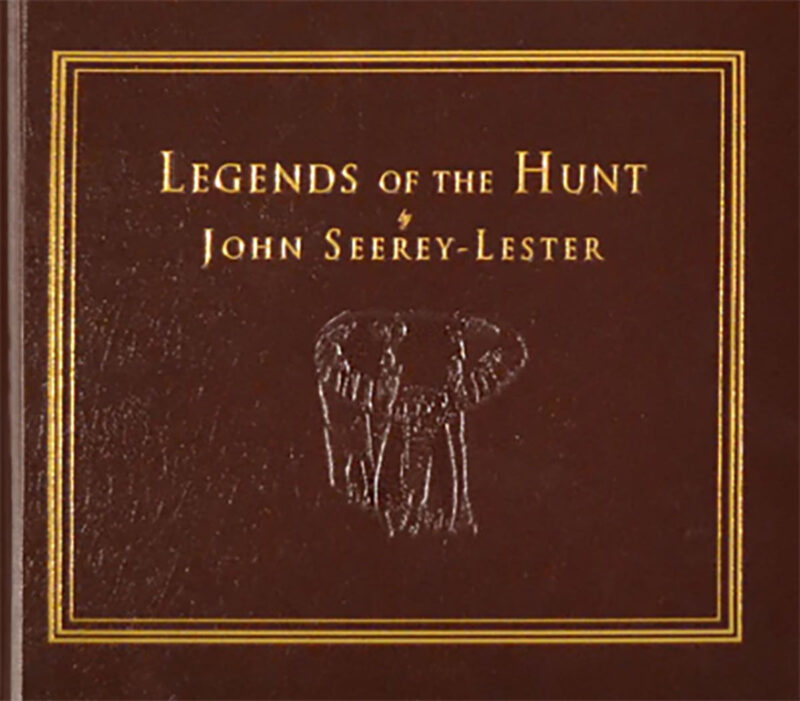 Published in 2009, this immensely popular first volume in the Legends series depicts the greatest sportsmen and explorers between the years 1849 and 1933. The late John Seerey-Lester’s riveting stories and images bring to life these legendary adventures, from life-and-death encounters with dangerous game to bizarre happenings that defy explanations. Buy Now
Published in 2009, this immensely popular first volume in the Legends series depicts the greatest sportsmen and explorers between the years 1849 and 1933. The late John Seerey-Lester’s riveting stories and images bring to life these legendary adventures, from life-and-death encounters with dangerous game to bizarre happenings that defy explanations. Buy Now
